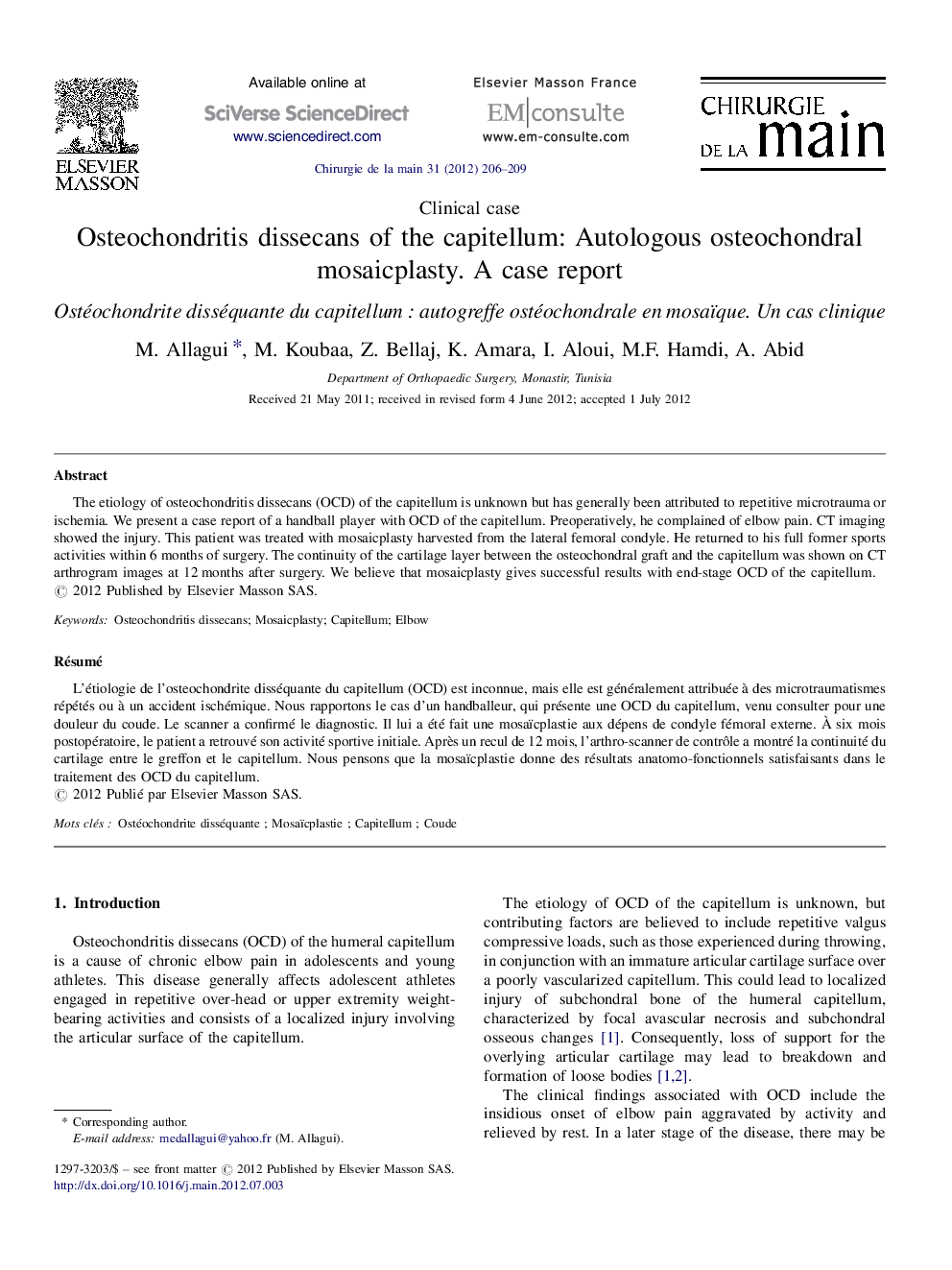| Article ID | Journal | Published Year | Pages | File Type |
|---|---|---|---|---|
| 4048873 | Chirurgie de la Main | 2012 | 4 Pages |
The etiology of osteochondritis dissecans (OCD) of the capitellum is unknown but has generally been attributed to repetitive microtrauma or ischemia. We present a case report of a handball player with OCD of the capitellum. Preoperatively, he complained of elbow pain. CT imaging showed the injury. This patient was treated with mosaicplasty harvested from the lateral femoral condyle. He returned to his full former sports activities within 6 months of surgery. The continuity of the cartilage layer between the osteochondral graft and the capitellum was shown on CT arthrogram images at 12 months after surgery. We believe that mosaicplasty gives successful results with end-stage OCD of the capitellum.
RésuméL’étiologie de l’osteochondrite disséquante du capitellum (OCD) est inconnue, mais elle est généralement attribuée à des microtraumatismes répétés ou à un accident ischémique. Nous rapportons le cas d’un handballeur, qui présente une OCD du capitellum, venu consulter pour une douleur du coude. Le scanner a confirmé le diagnostic. Il lui a été fait une mosaïcplastie aux dépens de condyle fémoral externe. À six mois postopératoire, le patient a retrouvé son activité sportive initiale. Après un recul de 12 mois, l’arthro-scanner de contrôle a montré la continuité du cartilage entre le greffon et le capitellum. Nous pensons que la mosaïcplastie donne des résultats anatomo-fonctionnels satisfaisants dans le traitement des OCD du capitellum.
